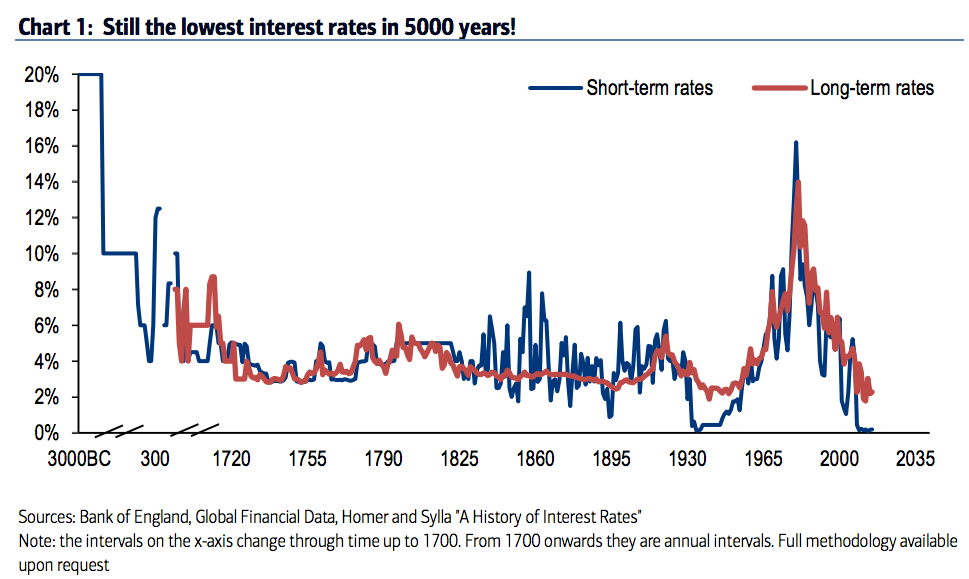Virtually all market watchers expect the Federal Reserve to raise its benchmark interest rate on Wednesday by 25 basis points to a range of 0.50% to 0.75% from the current range of 0.25% to 0.50%.
That would be the first rate hike in 2016.
But rates aren’t just low within the context of American history. They also happen to be at the lowest levels in the last 5,000 years of civilization.
Citing a speech by Bank of England Chief Economist Andy Haldane, Bank of America Merrill Lynch’s Michael Hartnett and his team previouslyshared the chart below, which shows just how low today’s rates are relative to other times in history.
Haldane's list of sources for this is pretty staggering. (You can look through them all here.)
So to make things a bit clearer, we put together an annotated list of key historical episodes and the corresponding interest rate of the time, using the data from "The Trader and His Shadow."
Behold:
- Mesopotamia, c. 3000 BC: 20% Babylon, Code of Hammurabi, 1772 BC: codified earlier Sumerian custom of 20%. Persian conquest (King Cyrus takes Babylon), 539 BC: rates of 40+%. Greece, Temple at Delos, c. 500 BC: 10% Rome, Twelve Tables, 443 BC: 8.33% Athens/Rome: circa the first two Punic Wars, 300-200 BC: 8% Rome: 1 AD: 4% Rome, under Diocletian, 300 AD: 15% (estimated) Byzantine Empire, under Constantine, 325 AD: limit 12.5% Byzantine Empire, Code of Justinian, 528 AD: limit 8% Italian cities, c. 1150: 20% Venice, 1430s: 20% Venice, (Leonardo da Vinci paints "The Last Supper in Milan"), 1490s: 6.25% Holland, beginning of the Eighty Years' War, 1570s: 8.13% England, 1700s: 9.92% US, West Florida annexed by the US, 1810s: 7.64% US, circa World War II, 1940s: 1.85% US, Reagan administration, 1980s: 15.84% US, Fed does not hike rates in September 2015: 0-0.25% US, Fed does hike rates in December 2015: 0.25-0.5%

